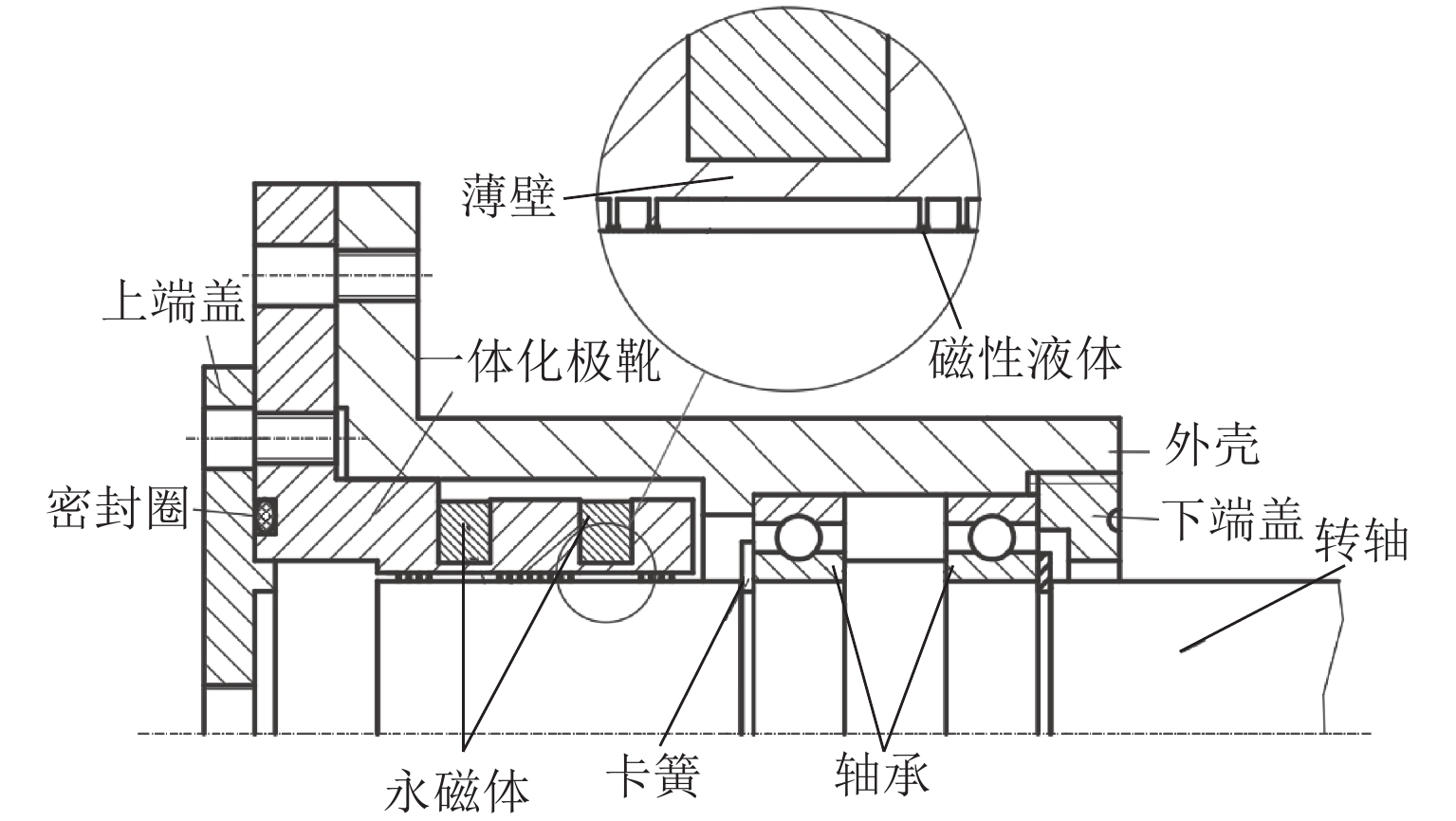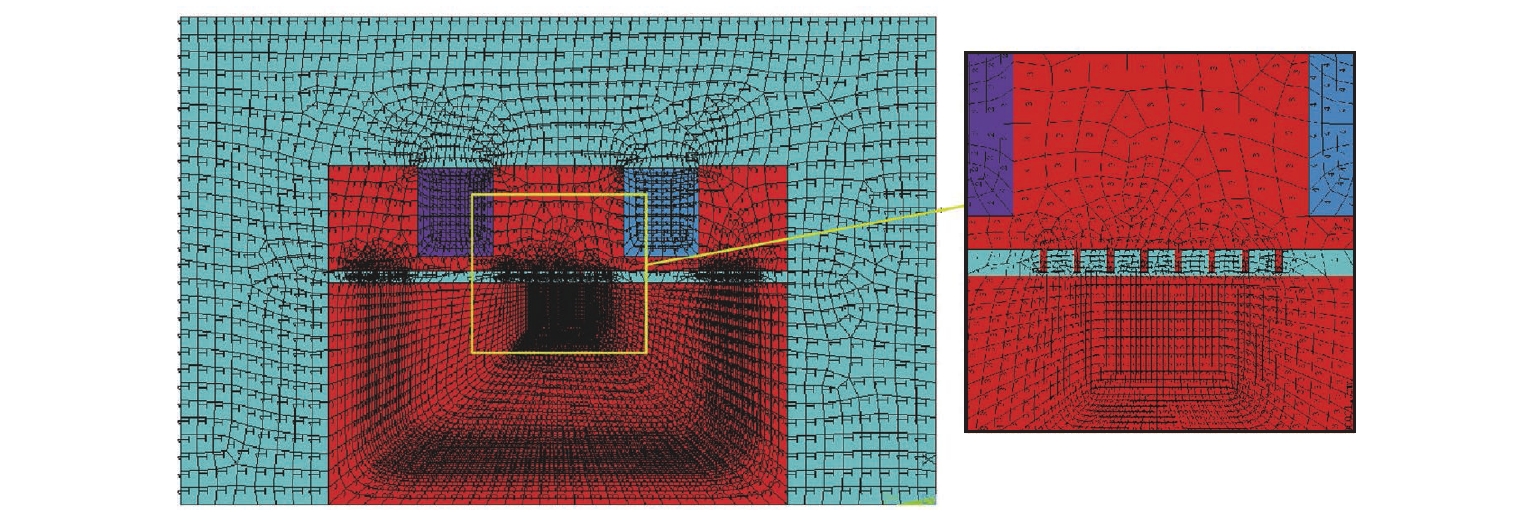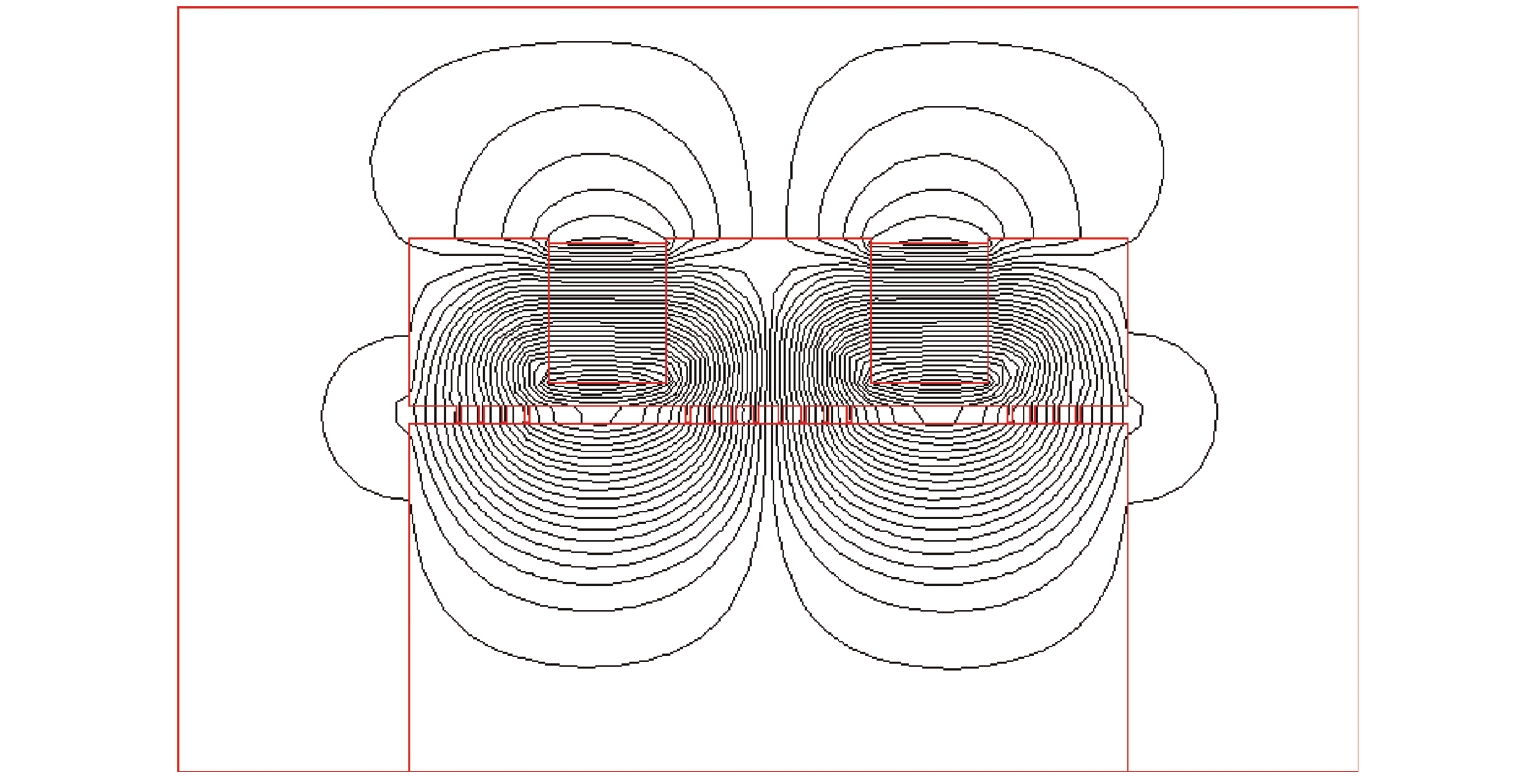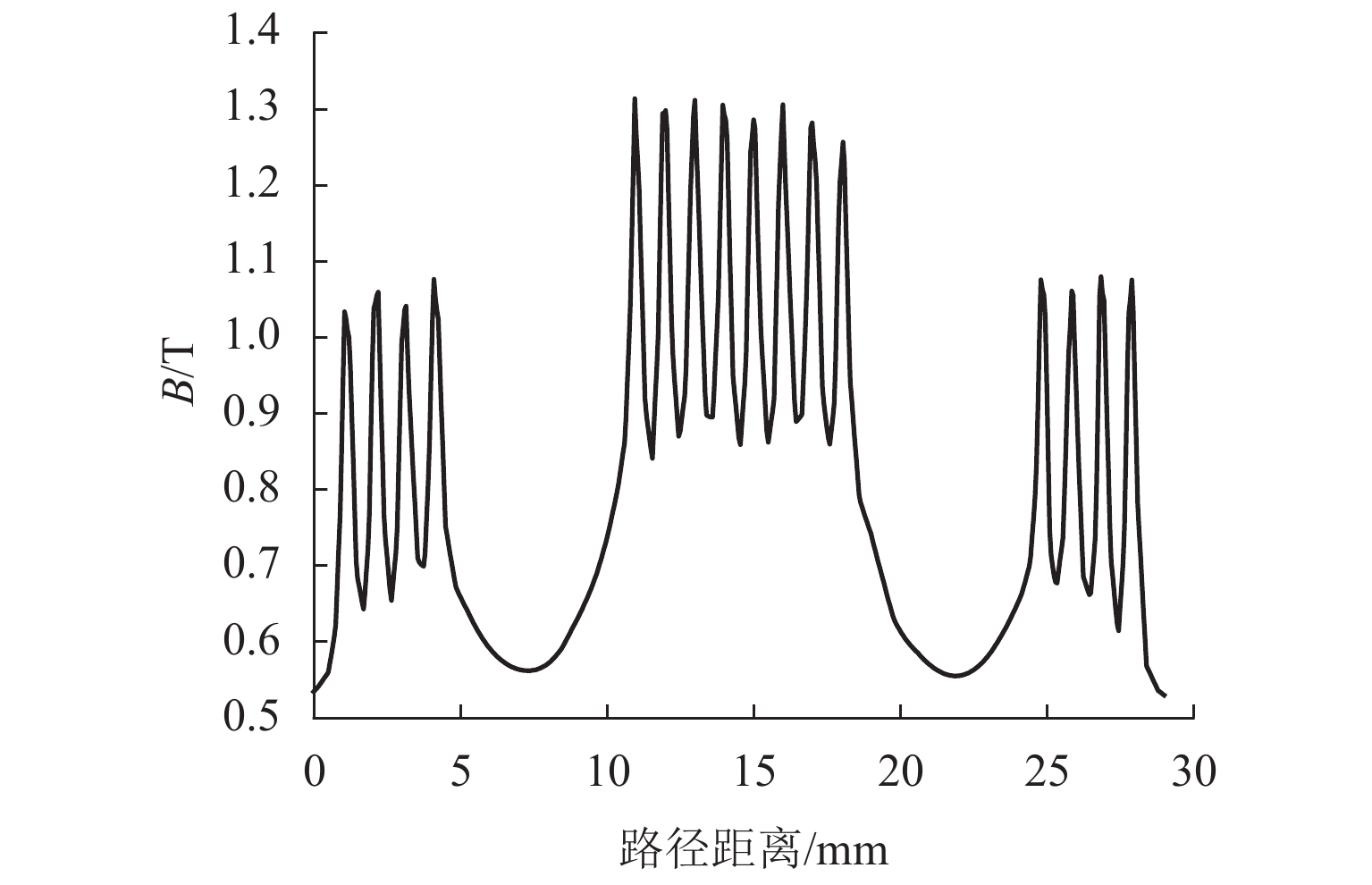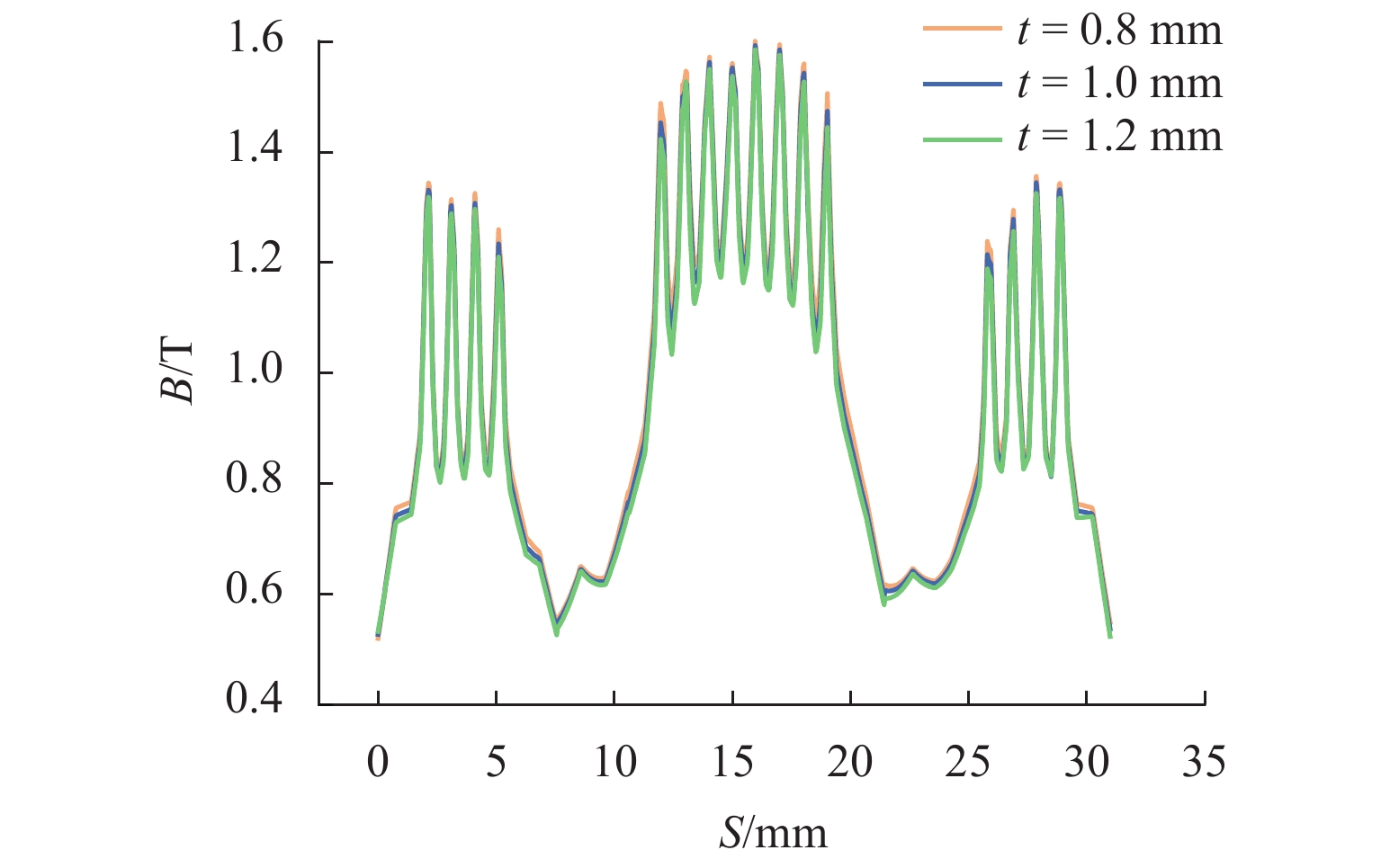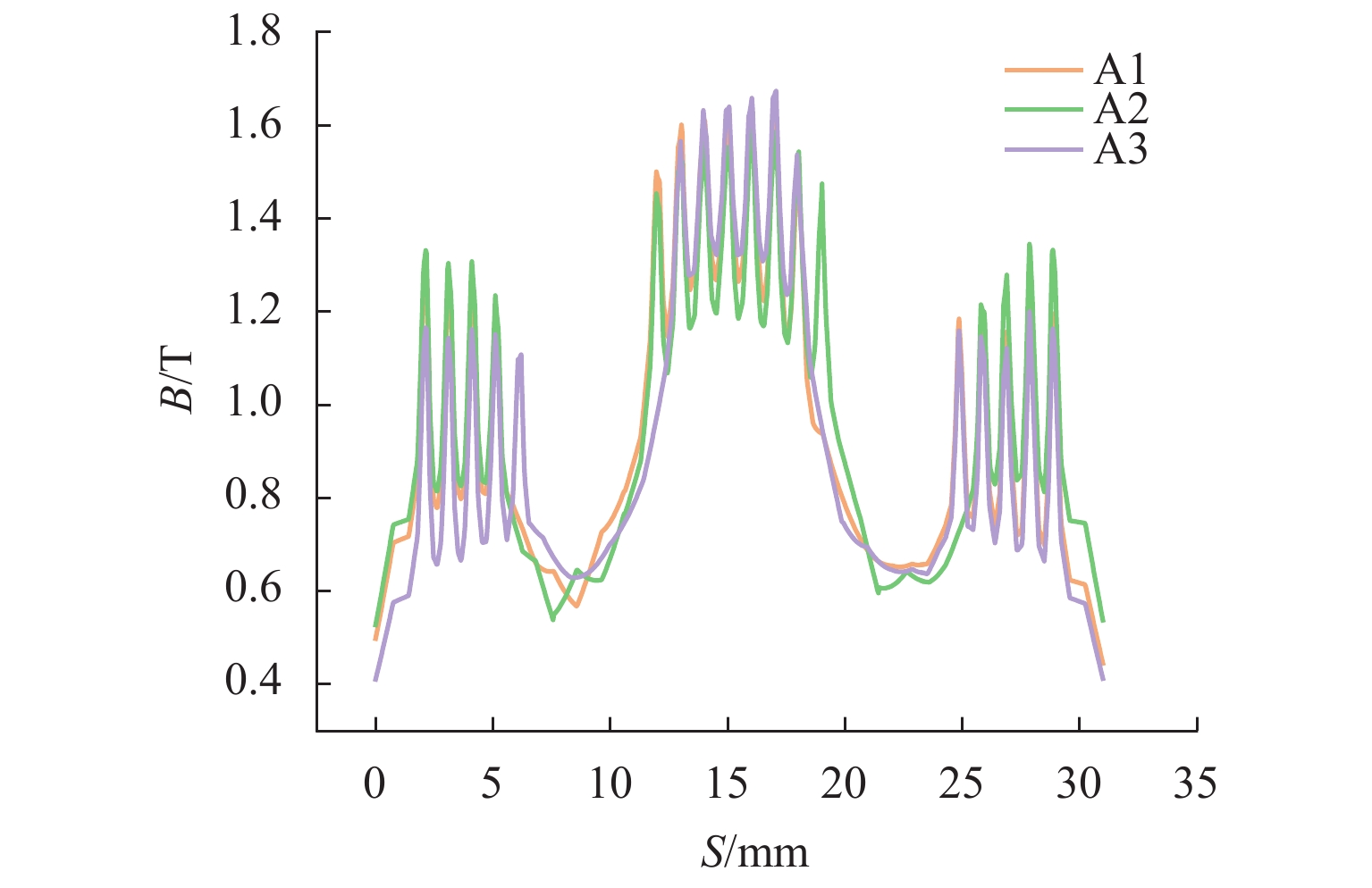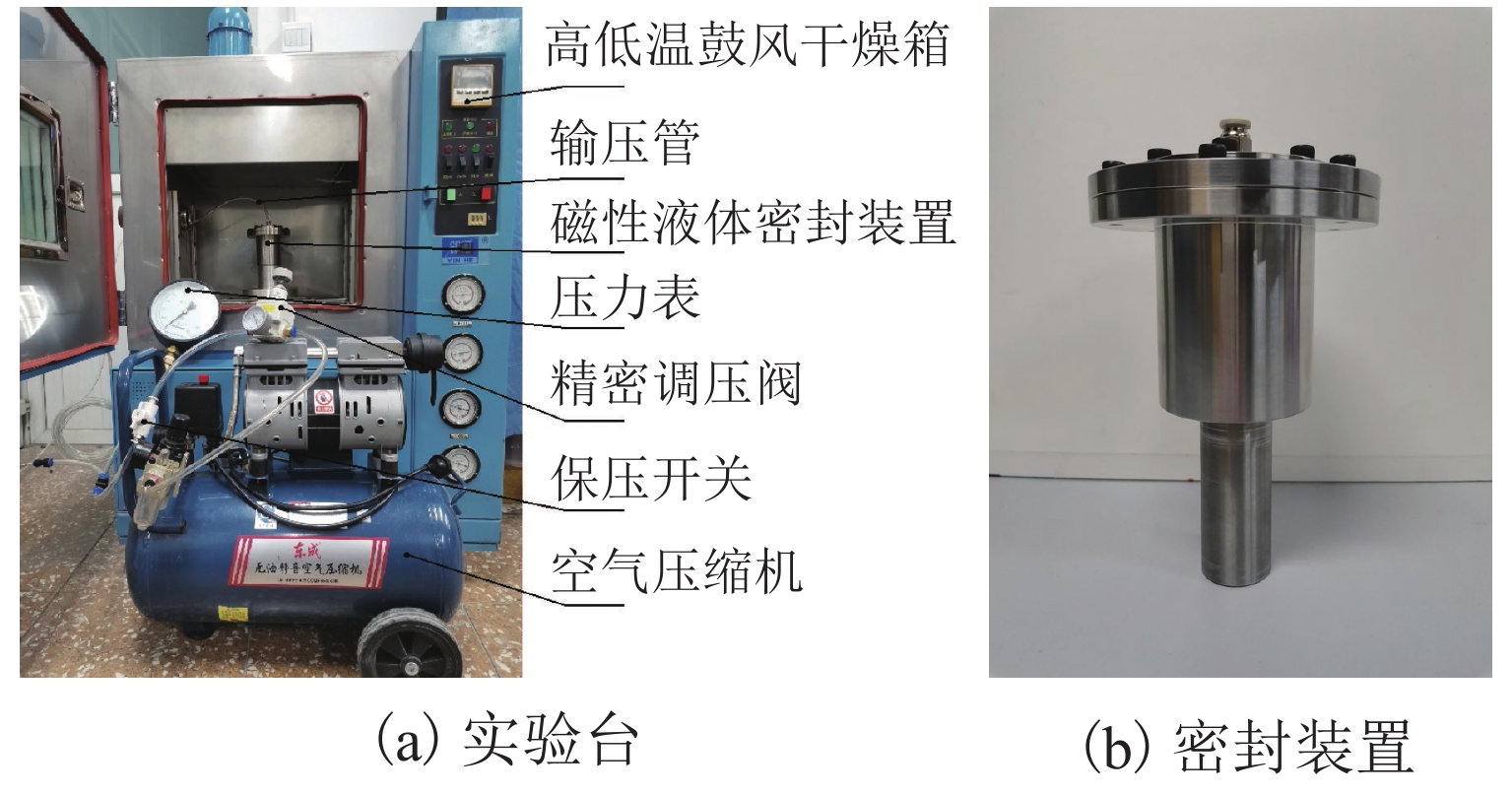Magnetic Fluid Sealing Structure of Integrated Pole Shoe
-
摘要:
极靴一体化磁性液体密封具有良好的应用前景,为研究极靴一体化磁性液体密封耐压性能的影响因素,对一体化极靴结构参数进行了分析. 首先,推导了磁性液体密封结构的耐压公式;其次,使用有限元仿真分析磁性液体密封结构的耐压性能,首次分析了有无薄壁、薄壁厚度、极齿与薄壁的轴向距离以及多级极靴尺寸分布比例对于磁性液体密封结构耐压的影响;最后,加工了极靴一体化磁性液体密封装置,搭建实验台进行实验研究. 结果表明:一体化极靴比传统极靴磁性液体密封耐压略小,但相差不大;薄壁厚度以及极齿与薄壁轴向距离均与密封结构耐压值成反比;对于多级极靴结构,磁铁之间的极靴长度大于两侧极靴长度,更利于磁性液体密封的耐压.
Abstract:Magnetic fluid seal of integrated pole shoe has promising prospect. To study the factors affecting its pressure resistance, the structural parameters of the integrated pole shoe are analyzed. First, the pressure resistance formula of the magnetic fluid sealing structure is deduced. Second, the finite element simulation is used to analyze the pressure performance of the magnetic fluid seal structure, in terms of thin-wall presence, thin-wall thickness, axial distance between pole teeth and thin wall, and the distribution ratio of multi-stage pole shoe size. Finally, the magnetic fluid sealing device of integrated pole shoe was made, and an experimental platform was built. The results show that the pressure resistance of the integrated pole shoe is slightly smaller than that of the traditional pole shoe, but the difference is trivial; the thin wall thickness and the axial distance between pole teeth and the thin wall are inversely proportional to the pressure resistance of the sealing structure; for the multi-stage pole shoe structure, the length of the pole shoe between the magnets is longer than the pole shoe length on both sides, which is more conducive to the pressure resistance of the magnetic fluid seal.
-
Key words:
- integrated pole shoe /
- magnetic fluid /
- sealing /
- pressure resistance /
- finite element
-
表 1 不同壁厚对照组磁感应强度差值的总和
Table 1. Sum of differences of magnetic induction intensity in control group with different wall thicknessess
薄壁厚度/mm 0.8 1.0 1.2 ∆BSUM/T 7.3489 7.3352 7.2693 表 2 不同轴向距离对照组磁感应强度差值的总和
Table 2. Sum of differences of magnetic induction intensity in control group with different axial distances
轴向距离/mm 0.8 1.0 1.2 1.4 ∆BSUM/T 7.3352 7.2882 7.2170 7.0876 表 3 极靴尺寸分布比例对照组参数
Table 3. Distribution ratios of pole shoe size corresponding to control group parameters
对照组 L1 L2 L3 长度/
mm极齿
数/个长度/
mm极齿
数/个长度/
mm极齿
数/个A1 7.0 5 7.8 7 6.0 4 A2 6.0 4 8.8 8 6.0 4 A3 7.0 5 6.8 6 7.0 5 表 4 极靴尺寸分布比例对照组磁感应强度差值的总和
Table 4. Sum of differences of magnetic induction intensity in control groupp
对照组 A1 A2 A3 ∆BSUM/T 7.0893 7.3352 6.9507 -
[1] CHARLES S W, POPPLEWELL J. Properties and applications of magnetic liquids[J]. Endeavour, 1982, 6(4): 153-161. doi: 10.1016/0160-9327(82)90070-9 [2] 李德才. 磁性液体的理论及应用[M]. 北京: 科学出版社, 2003. [3] ROSENSWEIG R E. Ferrohydrodynamics[M]. Cambridge: Cambridge University Press, 1985: 344. [4] 池长青, 王之珊, 赵丕智. 铁磁流体力学[M]. 北京: 北京航空航天大学出版社, 1993. [5] 何新智,苗玉宾,王礼,等. 磁性液体密封液体技术的进展简述[J]. 真空科学与技术学报,2019,39(5): 361-366. doi: 10.13922/j.cnki.cjovst.2019.05.01HE Xinzhi, MIAO Yubin, WANG Li, et al. Brief introduction to the progress of magnetic fluid sealing fluid technology[J]. Journal of Vacuum Science and Technology, 2019, 39(5): 361-366. doi: 10.13922/j.cnki.cjovst.2019.05.01 [6] 李德才,郝都. 磁性液体旋转密封的关键问题研究进展[J]. 真空科学与技术学报,2018,38(7): 564-574. doi: 10.13922/j.cnki.cjovst.2018.07.04LI Decai, HAO Du. Research progress on key issues of magnetic fluid rotary seals[J]. Journal of Vacuum Science and Technology, 2018, 38(7): 564-574. doi: 10.13922/j.cnki.cjovst.2018.07.04 [7] CHEN Y B, LI D C, ZHANG Y J, et al. Numerical analysis and experiment study of magnetic fluid boundary in seals[J]. Journal of Magnetics, 2018, 23(2): 293-299. doi: 10.4283/JMAG.2018.23.2.293 [8] 陈一镖. 高速工况下磁性液体密封的研究[D]. 北京: 北京科技大学, 2019. [9] ZHANG Y J, CHEN Y B, LI D C, et al. Experimental validation and numerical simulation of static pressure in multi-stage ferrofluid seals[J]. IEEE Transactions on Magnetics, 2019, 55(3): 1-8. doi: 10.1109/TMAG.2019.2898030 [10] CHEN J W, LI D C, HAO D. Investigation on the influence of temperature on starting torque of magnetic fluid seal[J]. Journal of Magnetics, 2018, 23(3): 436-441. doi: 10.4283/JMAG.2018.23.3.436 [11] ROSENSWEIG R E. Ferrohydrodynamics[M]. NewYork: Dover Publications, 2002: 307-323. [12] 李德才. 磁性液体密封理论及应用[M]. 北京: 科学出版社, 2010: 174-177. [13] LI Z X, LI S X, WANG X, et al. Numerical simulation and experimental study on magnetorheological fluid seals with flexible pole pieces[J]. IEEE Transactions on Magnetics, 2021, 57(10): 1-7. [14] 兵器工业无损检测人员技术资格鉴定考核委员会. 常用钢材磁特性曲线速查手册[M]. 北京: 机械工业出版社, 2003: 53-55. -





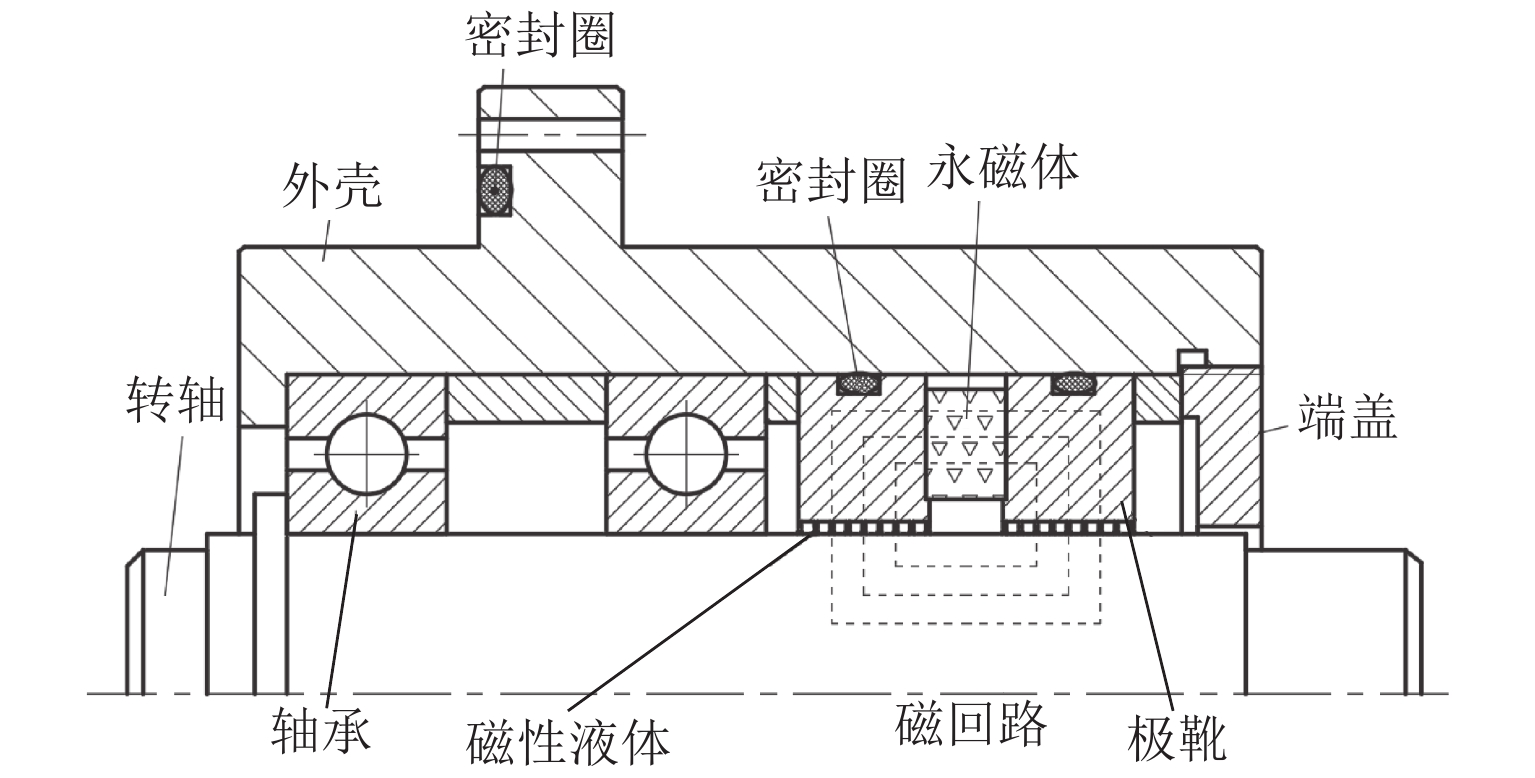
 下载:
下载:
